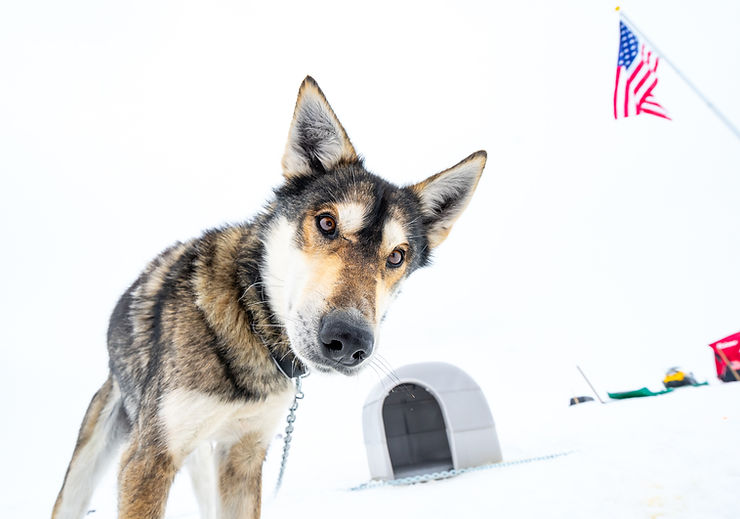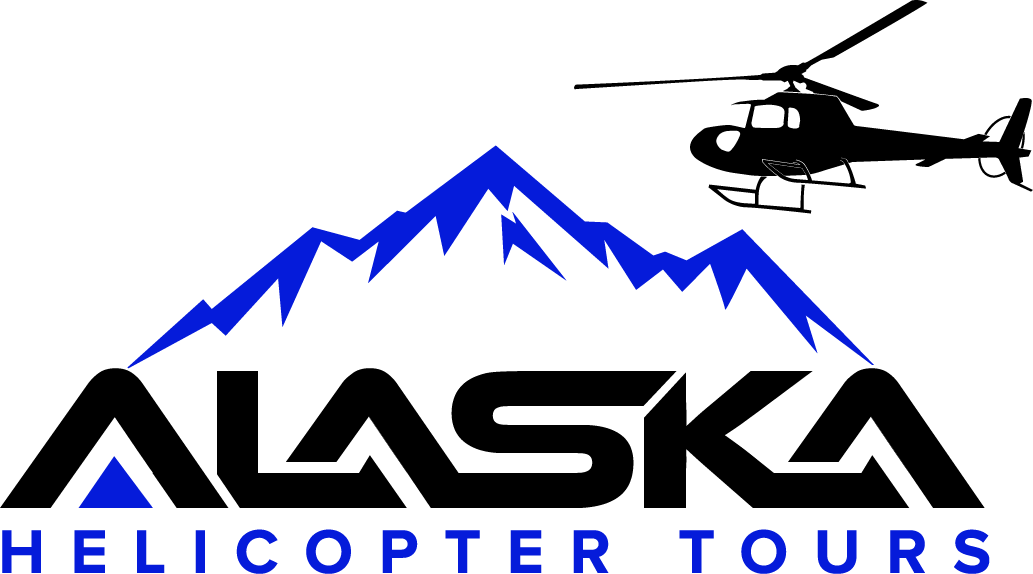Getting to know Dallas Seavey, 5-time Iditarod champion
- chad1265
- May 19, 2021
- 7 min read
Updated: May 22, 2021

Sled dogs are now living on the glacier for the summer for our dog sled adventure! We set up the dog camp earlier this month and started operating Glacier Dogsled Tours on May 2nd. We are proud to be the first tour company of the season in Alaska to start operating glacier dog sled tours.
Our dogsled tours are operated by our friend and partner, Iditarod musher, Dallas Seavey. He just won the Iditarod Trail Sled Dog Race for a record-tying 5th time (tied with Rick Swenson). His dedication and connection with his dogs are well known and that’s one of the biggest reasons why he’s been so successful.
After his recent Iditarod win, a well-deserved break, and setting up the glacier dog sled camp, I (Juno) sat down with Dallas to get to know more about his championship journey and his thoughts behind the dogsled tours.

Photo: Juno Kim
This is your first year doing glacier dogsled tours! How do you feel about that?
Dallas: I’ve been aware of the glacier dog sled tours for a long time. My dad (Mitch Seavey, a 3-time Iditarod champion) has done it and I’ve been personally giving sled dog tours to guests in Alaska since I was 5 years old. I like looking at all the different ways to experience mushing. Having the opportunity to do it on the glacier where guests can mush dogs on snow in summer is great! It’s the most realistic way to experience dog sledding in summer. Many dogs on the glacier right now have just competed in the Iditarod with me. I like to share the experience that I had in winter running the Iditarod with the guests as authentically as possible.
This was also the first time transporting your dogs up to the glacier. How was that experience?
Dallas: Logistically, transporting dogs up to glaciers is a big undertaking both for the dogs and for people. The staff live a remote lifestyle in the summer months. They are not able to go to the grocery store or watch Netflix at the end of the day. Even thinking about the food, it’s a huge task to be up there for both dogs and people.
But I don’t think there’s really any concern. I know dogs quite well. Fortunately, I’ve spent most of my time in remote places with sled dogs. So essentially, it’s the same experience for our staff and dogs on the glacier. Even though there are things we’ve never done before, I can pretty much envision how the dogs are going to react to that experience because I worked with the dogs in similar places.
In the end, everything went very smoothly and the dogs seemed not all that flustered. I was talking to one of the staff up there and they were saying how when the dogs got up there they acted like nothing happened, like “Oh ok, this is normal now”. And that’s why I love sled dogs, because they are happy and they adapt so quickly. They think as long as they have their pack and humans are around, things must be normal.

Photo: Juno Kim | on the day of the summer glacier dog camp set up
I’ve been to other dog sled kennels and noticed that your dogs are exceptionally well behaved. I wanted to point that out and hear your thoughts.
Dallas: I love the human-dog connection. I love observing those human-animal relationships. Because you see an amazing amount of proficiency in communication. I love to see that. When somebody is so dialed into the animals, the human is listening and paying attention to what the dog is sensing, thinking, and feeling, and a good human partner in the relationship is going to notice what that dog is experiencing, and help the dog to adapt and deal with the situation and be there to support them. I think that’s the key to a successful race, having that super connection with the dogs and being aware so you can serve their needs.
Our dogs are also fortunate because they get a lot of opportunities. Being around different people, they get exposed to a lot of things, and of course, they are going out on races. But we also travel all over Alaska training for the Iditarod or other races, so they get a lot of opportunities to have a lot of experiences. I think that helps them to learn to trust the humans, work with the humans, because it’s not just a routine. Of course the chance to visit other people when the travelers visit our kennel here (in Talkeetna) or up on a glacier, that’s a great opportunity to continue getting these dogs new people to sniff, new experiences, and socialization that they love.
Sounds like you really enjoy sharing your dog sled racing experience with visitors.
Dallas: I feel fortunate to live an amazing life. I got to live in the greatest wilderness of the world with sled dogs. It’s really fun to show people a glimpse of that. Even if it’s just for an hour or two, to see their faces light up and to have that experience, they get to witness different ways of life.
What is it like to compete against your dad? Dog mushing is a unique sport that doesn't have age limitations like other sports, so competing with your father must be an interesting challenge.
Dallas: That’s been interesting. You’re absolutely right, it’s a unique sport that had me at 25 competing with my dad at nearly 60. At the same time, our top competitor was Aliy Zirkle. So that’s men and women, that big of an age range. I won my first Iditarod when I was 25, the youngest person to ever win the race. The very next year, my dad won the Iditarod and became the oldest person to ever win the race. And both of the races Aliy Zirkle finished second and the following year she was only two minutes behind me. It’s incredible that all of that is rolled into a sport.
First, I would say it says a lot about the sport. It’s not just about the raw physical talent. It’s about being a good coach and caregiver to the dog team. Understanding and orchestrating a team. You have to have grit and have to be tough, but toughness is not tied to physical ability. As much as it’s a physical sport, it’s more about making good decisions.
As far as competing with my dad, that’s been really unique. I would consider him as one of the best friends I have. We are very close. But when it came to Iditarod, we never cooperated. When I first started my kennel, my dad was my arch rival. For six consecutive years, either my dad or I won the race. It was the best rivalry that the sport had ever seen. In 3 of the 6 races, we finished 1st and 2nd. My dad was “the” competitor. In 2015 and 2016 he was the one to beat to win the race. In 2017, he’s the reason why I didn’t win the race.
It was interesting, while we were racing we were both serious, giving it our all, at the same time you couldn’t be motivated by hating your competitor. It was a really pure motivation to push yourself to do well. I think he had the same attitude. So it’s really interesting to race someone that you really care about. It’s fun to race at that level and only have good intentions for your competitor.
Did you get to celebrate after your latest big win or did you go back to work right away?
Dallas: The Iditarod race is one long week. The dog musher lifestyle is a year round, year after year. It's fun to get to relax and celebrate a little after the race, but I don’t do this because of the race. I race because I’m doing this, this meaning running a kennel, working with sled dogs, developing dogs, watching them grow into the best version of themselves they can be. That’s what I enjoy doing. So it’s so easy going back to the routine that we’ve been doing all year. My winter isn’t different from the Iditarod. There is lots of work around the kennel, maintaining the dog yard, and preparing for the summer stuff like the glacier tour.
I did manage to get away for a week or so but it wasn't until a couple of weeks after the race.
I’m sure a lot of people ask you the same question. Are you planning to race in the Iditarod next year?
Dallas: It’s my plan to come up with the plans before it’s too late! I don’t have any plan yet, currently looking at options. There’s a fair chance that I will run, and a chance that I won’t. I have a 10-year-old daughter who’s about to turn 11 soon, and having time with her is very important to me. And as we talked about earlier, mushing is a sport you can do for a long time. But there are other things that don’t last forever, spending time with your child for example. Maybe I’ll run next year, or every other year. I don’t know yet.

Photo: Juno Kim
Thank you, Dallas!
We will definitely keep an eye on your journey. In the meantime, Alaska visitors can travel up to the glacier for an authentic dog sledding experience, just like Dallas experienced during the Iditarod race. And of course, the best part of the tour is the cuddles with husky puppies!
Thank you so much to Dallas for chatting with me. This conversation gave me such a great insight into the world of dog mushing and the reasons behind his successful career and one of the most well-run kennels in Alaska. Alaska Helicopter Tours is excited to bring this opportunity for our visitors. Join our summer glacier Dogsled Tours for an authentic Iditarod experience!














Dallas Seavey’s dedication to dog sledding is truly inspiring! His bond with his dogs reminds me how important it is to understand different types of dog and their abilities. I recently found a great resource that helped me learn more about various breeds, their history, and characteristics—it made choosing the right dog so much easier!
good article, thank you!